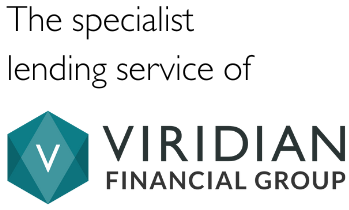
I remember when I bought my first home and within a few months there was a rate rise. I freaked out and was forced to redo my budget. Fortunately, it meant I simply had less play money for nights out. I was 24 so the extra $25 a week in loan repayments was a lot to me.
Fast forward to the GFC when rates went up to over 8% and then rapidly started to decline as the economy came to a halt. I had out of fear locked in at 8% at the peak of the market so wasn’t able to benefit from the rate reductions.
After the GFC recovery, rates started to increase again. That was in late 2010, over a decade ago, so for many of you – you would have only seen rate reductions. So what does it mean:
- The RBA has increased rates as a way of cooling the economy (inflation is deemed to be too high and unemployment very low). This is called monetary policy.
- When the RBA increases rates- this impacts on the cash rate, the rate that banks source money in the overnight market, so they pass this rate increase on the customers. Unless they are on a fixed rate- those customers will not see a rate increase impact them.
- Higher loan repayments mean less money for people to spend so this reduces the amount of spending in the economy therefore cooling things.
- Secondly, when there is the threat of further rises, people tend to be nervous, consumer sentiment drops, and people start to save rather than spend. This itself, can have a cooling effect on the economy.
- The banks source just under 50% of their funds to lend to consumers from wholesale markets (local and foreign). So the cost of funding to banks (ie the rate they pay on this money in the market) can be increasing regardless of what the RBA does. When we hear of foreign banks increasing their cash rates, this impacts on the cost of funding for wholesale money. When this happens, we see the banks raise rates independent to the RBA.
- The other 50% comes from deposits funds, when you leave your money with a bank- they can on lend that. Technically an increase in the cash rate should result in the banks passing on the increase to deposit holders. So far only some banks have passed on this increase to their deposit holders. (If you have cash- now is a good time to shop around and see who has passed on the rate increase to their deposit holders)
- Sometimes, the RBA only raises 0.10-0.15% which in the past has given the banks to ability to add anther 0.10-0.15% to their rates to recoup some of their costs. This has the same cooling effect by reducing the amount of spending in the economy.
Concerned about rate rises- what can you do?
- Contact your bank and broker and obtain some fixed rates. The media doesn’t like to mention this- but fixed rates are already very high- having anticipated at least a 2% rate increase now. If you are prepared to lock in at rates of 2-3% over the variable rate- please be very certain you feel rates are going to increase at least to this level and then some before you pay the premium from day 1. You are essentially locking in a forecast fixed rate- without any certainty that it will eventuate. Rates may very well go up by 2-3% in the next 3 years but they may also go up then down again if the economy slows down too much.
- Be wary of any lender that encourages you to fix in without a solid reason as to why they think it’s a good idea. “Just protecting yourself from future rate rises” is not a solid reason.
- Ask your lender/ broker- what your repayment looks like with another 0.50%, 1.00%, 2.00%- or whatever amount is keeping you up at night.
- Redo your budget based on the increased repayment and make sure you can afford it and take steps to ensure you can afford it.
- We know rates are on the rise. They are at emergency levels. Be prepared, put aside additional money now so that you have a buffer to use towards higher repayments.
- Keep abreast of what a variety of commentators are saying about rate rises. Knowledge is power.
- If you’ve obtained a loan in the past 5 years, the lender would have added a buffer of at least 2.50% to the actual rate- so technically you can afford the loan. If you obtained the loan prior 2014 (when rates were around 4.50% chances are the rates were much higher than where they are forecast to go so again you should be able to afford it. But that’s a very simplistic view and circumstances change as well as the general cost of living having increased.
I’m on a cheap fixed rate – what does that mean for me?
Well done for fixing. It’s probably the one time in history that you will be well ahead of the market had you stayed variable. Thanks to government funding resulting in these cheap rates.
But don’t rest on your laurels – the fixed rate will expire. You may have another year or two to run- depending when you bought -chances are you took 4 year rate around 2.00%. What would the repayment be if you had just been slogged with the rate rise? Plus another 0.50-2.00% being forecast.
If you can -start to make the repayment at the higher rate NOW into your offset based so you are building a buffer that you can dip into when rates are higher. That will ease the impact on you in a few years if and when rates are higher. Remember your fixed rate loan likely doesn’t have an offset but it’s likely you kept a portion variable to ensure you had an offset and could make extra repayments.
Or you may have saved a whole heap during the past few years due to lockdowns and no travel and this in itself can be a buffer to dip into when rates go up.
Before you put a lump sum into your fixed rate loan check with your bank or broker to ensure you don’t make additional repayments beyond the lenders limit and risk being slogged a penalty. And if you do put money into the fixed rate loan – be aware you likely can’t drawn this out until the fixed period expires. This may not be a concern to you if you have more savings that you thought but be mindful of keeping a rainy day fund.
If you haven’t got a loan yet- how do I protect myself?
- Look at the repayments at current rates. Add 2%. Add 3%. Make sure you can afford it and that there is enough discretionary spending in your budget to be able to still make it work.
It may mean eating out less, or less holidays, but this is exactly the intention behind the rate increases. It is designed to stop you spending. And therefore cool the economy.
- If you are unsure if you can afford it- try living as though you have the mortgage already. Try it for a period of 3 months (factoring in your rent as a mortgage repayment) and see if its doable.
- And be mindful of borrowing at your maximum and obtaining a pre-approval. Its very possible that by the time you have purchased, the servicing criteria from the banks will have changed and you will be left not being able to borrow the same amount.
Written by Tina Howes
As a Mortgage and Finance Advisor, I love the choice that I can offer clients by having access to so many lenders. I love being able to guide my clients throughout the whole process of arranging finance, leveraging off my experience to best structure your application, and make what can sometimes be a complex process simple.




